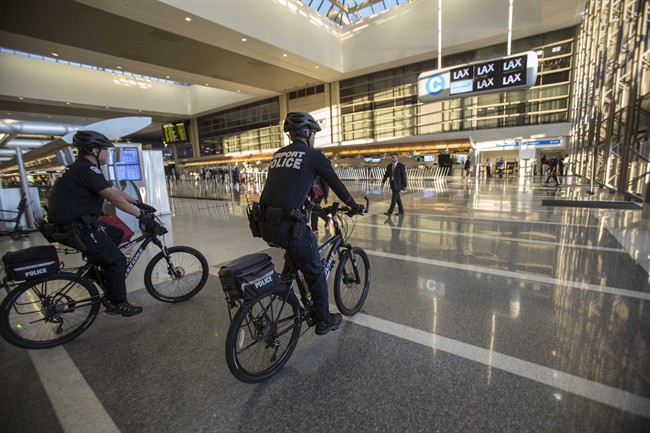LOS ANGELES – The U.S. Transportation Security Administration is considering a policy change that would allow airport security screeners to carry cellphones so they can quickly call for help in an emergency.

The proposal is part of an ongoing review of the response to a November shooting at the Los Angeles International Airport that left a TSA officer dead, according to an agency official close to the investigation who requested anonymity. The official wasn’t authorized to speak publically about the investigation because it is ongoing.
Officials need to decide whether the ability for agents to quickly call for help in an emergency trumps the potential distraction from the phones.
In the November shooting, TSA officers – who are unarmed – fled the screening area without hitting a panic button or using a landline to call for help. It took a call from an airline contractor to a police dispatcher, who then alerted officers over the radio – a lag of nearly a minute and a half, the officials said.
READ MORE: LAX shooting suspect targeted TSA agents: police
The Los Angeles shooting refocused the public’s attention on airport security. Despite many changes since the Sept. 11, 2001 terror attacks, it’s almost impossible to stop a gunman from simply entering a terminal.
- Gas station clerk stabbed several times during violent attack at Ultramar in Montreal
- Canada’s most wanted list: Toronto suspect in fatal shooting at No. 1
- Man acquitted in Tina Fontaine murder found dead, says her aunt
- Canadians should expect politicians to support right to bail, Virani’s office says
Minutes before a gunman opened fire in November, the two armed officers assigned to the area left for breaks without informing a dispatcher as required.
The Los Angeles Airport Police Department officers were outside Terminal 3 when authorities say Paul Ciancia opened fire with an assault rifle, two law enforcement officials told The Associated Press. The officials requested anonymity, saying they were briefed on the shooting but were not authorized to speak publicly about the ongoing investigation.
Before officers could get to the scene, Ciancia fatally wounded TSA Officer Gerardo Hernandez and then headed to the screening area where he shot two more agents and a traveller, authorities said. Ciancia was subdued after being wounded by officers in the gate area of the terminal.
The new details about the whereabouts of the two officers and communication issues come as authorities review the overall response, including whether emergency medical personnel were forced to wait longer than necessary to remove Hernandez so he could be taken to a hospital. The AP earlier reported that Hernandez did not receive medical care until 33 minutes after he was shot. A coroner’s release said he was likely dead within two to five minutes.
At LAX, armed police officers are assigned to each terminal and allowed to roam the vast expanses looking for suspicious people and items. When the Nov. 1 shooting started, the two law enforcement officials say one of the armed officers assigned to Terminal 3 was at or just outside an adjacent terminal. One of the officials said the officer was on a bathroom break while the other officer was in a vehicle on the tarmac outside Terminal 3, headed for a meal break.
READ MORE: Man suspected in deadly LAX shooting pleads not guilty
Departmental procedures require that officers notify a dispatcher before going on break and leaving their patrol area in order to ensure supervisors are aware of their absence and, if necessary, a relief unit can be brought in to cover their area.
Airport police union chief Marshall McClain said the officers assigned to Terminal 3 still were in position to quickly respond. He’s spoken with both and confirmed one was “going to the restroom or coming back from the restroom,” and the other was headed out on a meal break but still within his patrol area.
“He hadn’t gone on break yet. He was going to go on break,” McClain said. What typically happens is, “if you’re going to go on a lunch break, you get to your location and you tell them that you’re there.” Officers do this so travel time doesn’t cut into their break time.
Within a minute of the dispatcher’s call, that officer had stopped someone who ran out of the terminal and the other officer was heading toward the shooting, McClain said.
According to investigators, Ciancia arrived at the airport with the intention of killing TSA workers. Authorities have said Ciancia had a grudge against the agency, but they have not indicated what prompted it.



Comments